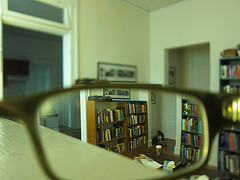 Often, children have a progressive form of myopia or nearsightedness that becomes worse throughout childhood. Progressive nearsightedness is caused predominantly by genetics. Kids tend to inherit an eye condition from their parents. To determine nearsighted cure for children, a parent should first determine if the child is nearsighted.
Often, children have a progressive form of myopia or nearsightedness that becomes worse throughout childhood. Progressive nearsightedness is caused predominantly by genetics. Kids tend to inherit an eye condition from their parents. To determine nearsighted cure for children, a parent should first determine if the child is nearsighted.
Usually, young kids with nearsightedness do not complain or only complain about difficulties in seeing objects that are far. A child who is nearsighted may move closer to an object to see clearly. If you notice this in your child, make an appointment with an eye doctor immediately. Furthermore, make sure that your child is examined in the first year of life, age three and every two years onwards, particularly if there is a family history of nearsightedness and other eye ailments.
A child with nearsightedness could wear eyeglasses or contact lenses when they are old enough to take care of them. This often depends on how involved the parents are in caring for the contacts. While nearsightedness is often inherited, it may not be possible to prevent it totally. Nevertheless, the steps above could help you minimize its effect on your child. Keep in mind that if your child is uncomfortable working or watching TV from afar, he or she may already be developing myopia and needs an eye examination as soon as possible.